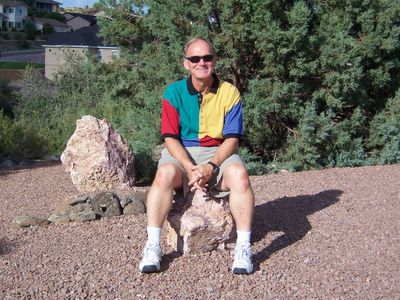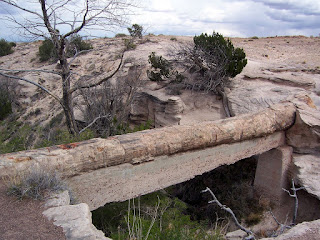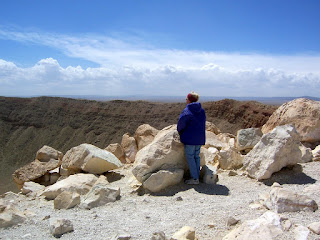Canyon de Chelly
 Northeastern Arizona is Navajo Land, home to 174,000 Native Americans. The Navajo Nation, a sovereign territory, encompassing 27,000 square miles across Arizona, New Mexico, and Utah, is larger than 10 states. It has some of the most beautiful landscape in the Southwest.
Northeastern Arizona is Navajo Land, home to 174,000 Native Americans. The Navajo Nation, a sovereign territory, encompassing 27,000 square miles across Arizona, New Mexico, and Utah, is larger than 10 states. It has some of the most beautiful landscape in the Southwest.
 Canyon de Chelly is really three canyons, de Chelly, del Muerto, and Monument, cut by streams from mountains to the east. It has been home to Native Americans for 5,000 years.
Canyon de Chelly is really three canyons, de Chelly, del Muerto, and Monument, cut by streams from mountains to the east. It has been home to Native Americans for 5,000 years.

The most famous geological feature of the canyon is Spider Rock, an 800 foot sandstone spire rising above the canyon floor.

Elders warn their children that Spider Woman will drop down her web and take them to the top and devour them if they are bad. They say the top is white from the sun bleached bones of naughty children.

To see the canyon, you can drive its north or south rim. To go into it requires a permit and a Navajo guide or you can use the one public access trail.

Carolyn and I hiked into Canyon de Chelly on the White House Trail.


The 2.5 mile trail descends a 500 feet to the canyon floor. (Other parts of the canyon are 1,000 feet deep.)


At the bottom, the canyon floor opens on a plain with a stream, small farmed fields, and grazing land for sheep, cattle, and horses.


On the south facing cliff are ruins of the White House, a cliff dwelling built 1,000 years ago by Puebloans. The white washed walls gave the structure its name.
For unknown reasons, the Puebloans abandoned Canyon de Chelly around 1300. In succeeding centuries the Hopi then the Navajos came to the canyon.










































